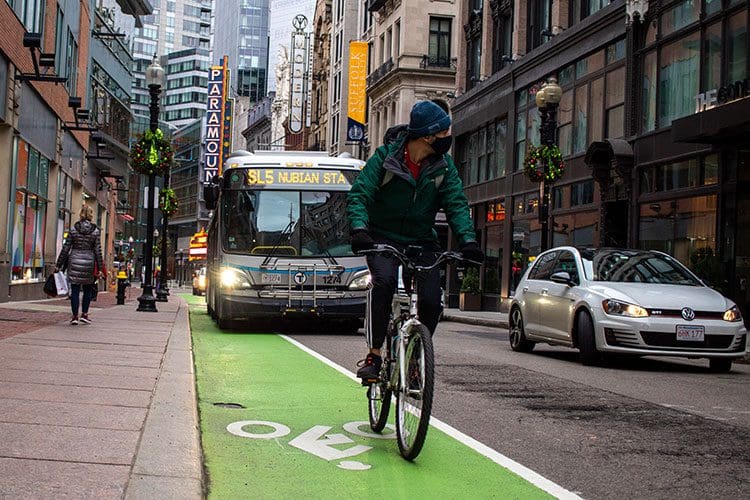Embarking on a journey astride a bicycle not only connects us to the world around us but also unveils the vulnerability we face on the open road. The sense of liberation can, unfortunately, be accompanied by the lurking danger of accidents. Recognizing the intricacies behind bicycle accidents is pivotal for any cyclist, and the art of self-preservation becomes paramount. This comprehensive exploration delves into the multifaceted reasons contributing to bicycle accidents, coupled with practical strategies for safeguarding oneself against these perils.
Lack of Visibility: A Leading Culprit
The pervasive lack of visibility stands as a formidable adversary for cyclists, often propelling them into situations where their presence is easily overshadowed by larger vehicles. Intersections and lane changes become treacherous grounds, where cyclists risk collision due to their diminutive profile. Combatting this hazard involves a multifaceted approach. Equipping oneself with high-visibility clothing and accessories, such as reflective vests and blinking lights, becomes a visual assertion demanding attention. Moreover, strategic route planning that favors well-lit pathways and a conscientious awareness of blind spots are essential practices in minimizing the risks posed by inadequate visibility.
Reckless Driving Behaviors: A Shared Responsibility
Reckless driving behaviors, such as disregarding traffic signals or exceeding speed limits, are catalysts for accidents involving bicycles. To ensure personal safety, cyclists must adhere rigorously to traffic rules, offering predictability to their motorized counterparts. In California, the “Three Feet for Safety Act” dictates that vehicles must maintain a minimum distance of three feet when overtaking cyclists, exemplifying how legislation aims to safeguard cyclists from reckless driving behaviors. In case of an unfortunate accident, working with reliable personal injury lawyers in California can help cyclists navigate the legal complexities and secure their rights. However, preventing such accidents requires a shared responsibility, where all road users must uphold their civic duty in promoting road safety.
Distracted Driving: A Modern Menace
The insidious rise of distracted driving, fueled by the ubiquity of smartphones and perpetual connectivity, poses a significant threat to cyclists. The distraction stemming from texting, browsing, or even conversing on the phone diverts a driver’s attention away from the road, exponentially increasing the probability of accidents involving cyclists. Cyclists must adapt to this contemporary menace with unwavering vigilance. Predicting the erratic behavior of distracted drivers requires adopting a defensive stance – maintaining a safe distance, making eye contact with motorists, and constantly being prepared to react to sudden maneuvers.Inadequate Infrastructure: A Systemic Challenge
The lack of proper cycling infrastructure emerges as a systemic challenge, often forcing cyclists to navigate poorly designed or neglected bike lanes. Sharing the road with motorized traffic becomes an unwarranted hazard, contributing to potential accidents. A proactive approach involves not only individual cyclist advocacy but also a collective call for improved municipal infrastructure. Communities must invest in well-maintained bike lanes, visible signage, and designated crossing areas to create a safer environment for cyclists, thereby mitigating the risks associated with subpar infrastructure.
Adverse Weather Conditions: Nature’s Challenge
The capriciousness of weather conditions adds a layer of complexity to the already intricate world of cycling. Slippery roads during rain, snow, or ice amplify the risks of accidents. Cyclists need to adapt their riding style to prevailing weather conditions – slowing down, maintaining a firm grip on their bicycles, and employing appropriate gear such as fenders and tires with enhanced traction. Opting for routes with reduced traffic and seeking shelter during severe weather are additional measures to ensure a safer cycling experience in the face of nature’s challenges.
Lack of Cycling Skills and Education: Knowledge is Power
Inexperience in navigating the nuances of cycling can inadvertently place cyclists in precarious situations. A comprehensive approach to safety involves imparting the necessary education and skills to cyclists. Understanding traffic rules, mastering signaling techniques, and adopting defensive riding practices are fundamental elements. Investing in cycling proficiency courses and participating in awareness campaigns can empower cyclists, especially beginners, with the knowledge and skills essential for navigating the road safely and confidently.
Doorings: A Unique Urban Challenge
Urban settings introduce a unique challenge for cyclists – the abrupt swinging open of car doors, colloquially known as “doorings.” This unexpected hazard demands heightened situational awareness from cyclists. Maintaining a safe distance from parked cars, anticipating potential door openings, and being prepared to react swiftly are crucial aspects of navigating urban environments. Simultaneously, motorists can contribute to safety by practicing the Dutch Reach technique – using the hand farthest from the door to open it – thus ensuring a preliminary check for oncoming cyclists before disembarking from their vehicles.
Photo by Aaron Doucett on Unsplash
As we traverse the exhilarating landscape of cycling, the shadow of potential accidents looms ever-present. Armed with an understanding of the factors influencing bicycle accidents and a commitment to proactive safety measures, cyclists can reclaim the joy of two-wheel exploration. The road is a shared space, demanding a collective responsibility for fostering an environment where cyclists can thrive. By embracing visibility, advocating for infrastructure improvements, and cultivating a culture of respect among road users, we pave the way for a safer, more enjoyable cycling experience. So, let’s ride smart, stay safe, and relish the journey on two wheels.
Top Photo – Image by Stephan Wusowski from Pixabay
No products found.


















